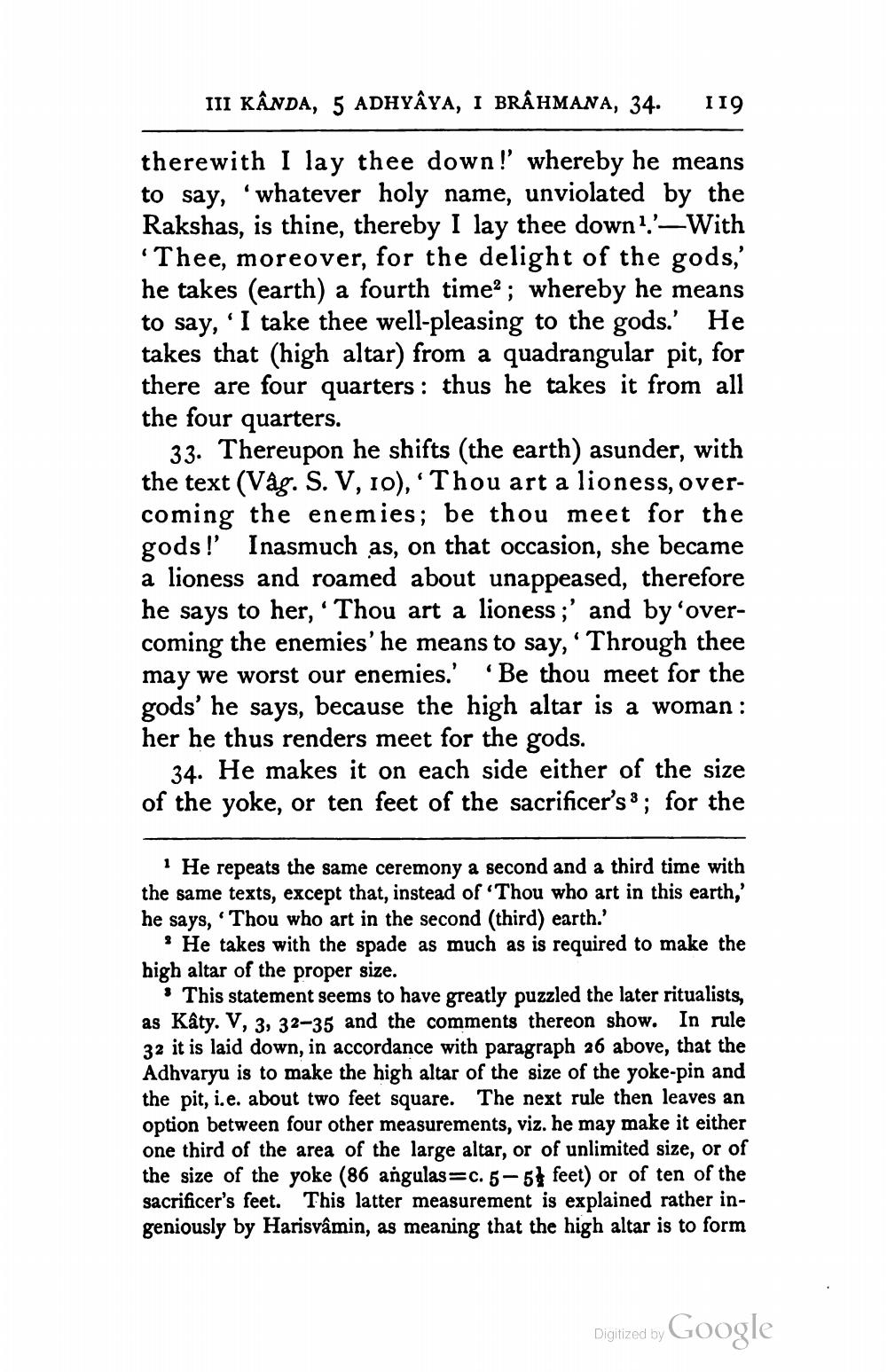________________
III KÂNDA, 5 ADHYÂYA, I BRÂHMANA, 34.
119
therewith I lay thee down!' whereby he means to say, 'whatever holy name, unviolated by the Rakshas, is thine, thereby I lay thee down?.'—With 'Thee, moreover, for the delight of the gods,' he takes (earth) a fourth time? ; whereby he means to say, 'I take thee well-pleasing to the gods.' He takes that (high altar) from a quadrangular pit, for there are four quarters : thus he takes it from all the four quarters.
33. Thereupon he shifts (the earth) asunder, with the text (Våg. S. V, 10), Thou art a lioness, overcoming the enemies; be thou meet for the gods! Inasmuch as, on that occasion, she became a lioness and roamed about unappeased, therefore he says to her, 'Thou art a lioness;' and by overcoming the enemies' he means to say, 'Through thee may we worst our enemies.' 'Be thou meet for the gods' he says, because the high altar is a woman : her he thus renders meet for the gods.
34. He makes it on each side either of the size of the yoke, or ten feet of the sacrificer's 8 ; for the
1 He repeats the same ceremony a second and a third time with the same texts, except that, instead of 'Thou who art in this earth,' he says, 'Thou who art in the second (third) earth.'
He takes with the spade as much as is required to make the high altar of the proper size.
This statement seems to have greatly puzzled the later ritualists, as Kâty. V, 3, 32-35 and the comments thereon show. In rule 32 it is laid down, in accordance with paragraph 26 above, that the Adhvaryu is to make the high altar of the size of the yoke-pin and the pit, i.e. about two feet square. The next rule then leaves an option between four other measurements, viz. he may make it either one third of the area of the large altar, or of unlimited size, or of the size of the yoke (86 angulas=c. 5-6 feet) or of ten of the sacrificer's feet. This latter measurement is explained rather ingeniously by Harisvâmin, as meaning that the high altar is to form
Digitized by Google




